For the people in the North Eastern region of India, the concept of ‘Community’ has always been considered sacred. As such, the desire to have a space for the community followed naturally and community halls can be found in almost all communities across the North East, small or big. These halls have been used as a space to have a dialogue for planning, sharing of ideas, storytelling to enhance community wellbeing and more. Apart from its purpose as a meeting place, many community halls are used as classrooms, a training hall, banquet hall etc.
NESFAS, with the aim to help create better functioning community halls among its partner communities, took up Beautification of Community Halls as one of the initiatives under the “No one shall be left behind initiative” project funded by the REC. The objective of the project was not only concentrated in providing better gathering spaces for the communities alone, but also sought to keep alive the traditional methods of construction using locally available materials like bamboo. Introducing bamboo as one of the main components of building using traditional methods was put forward with the aim to create opportunities for the youth so that they can also utilize the skills acquired in the future as needed.
A total of fifty community halls in East Khasi Hills, Jaintia Hills, Ri-Bhoi, and West Garo Hills Districts of Meghalaya and a select few communities in Nagalandwere renovated and beautified. The existing community halls in these communities were assessed based on certain parameters like daylight, comfort, electricity, toilets, hand wash areas, etc. Design interventions based on these parameters were then proposed and discussed with the communities following the approval of which, the construction and renovation was executed.
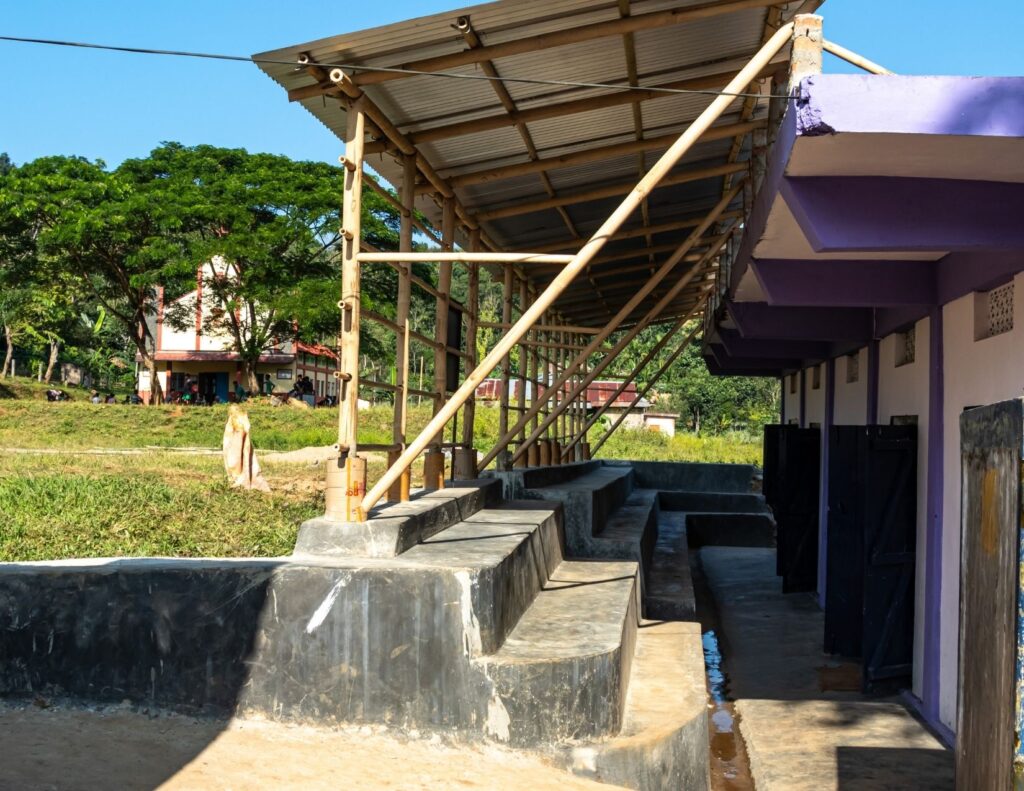
Pius Ranee, Executive Director NESFAS and KhrawborlangWahlang, Advisor Innovation and Community empowerment led the project, along with Ajay Nayak (chief architect of the project) and his team from EdEn, Mumbai. Rimeka Dora Ranee (Consultant architect from Shillong) and two other engineers from Shillong, viz. ArmishalKhasain and Elvin M Nongkhlaw also assisted the team from EdEn. The project also received maximum support from the communities with local mason from all the 50 villages lending their hands in the renovation project. Along with them, 7 bamboo artisans contributed in beautifying the community halls. (viz. BorsingMarbaniang and Jester Masynten from Khliehumstem, Augustine Sawian from Laitsohpliah, Anjelus Ranee, Markus Ranee, and Binasius Buhphang from Nongtraw and Phriep Syeimlieh from Nongpriang)
Rimeka Dora Ranee shared that the project has been unique from any kind of projects that is being undertaken in the current era. She added, “The renovation of community halls has been an interesting project to work on. In this era where construction is mostly done using concrete and steel, working with bamboo as one of the principal materials has been a refreshing change of pace. I hope there will be more programs in the future that enable this exchange of knowledge and combining old and new technologies to bring out the best.”
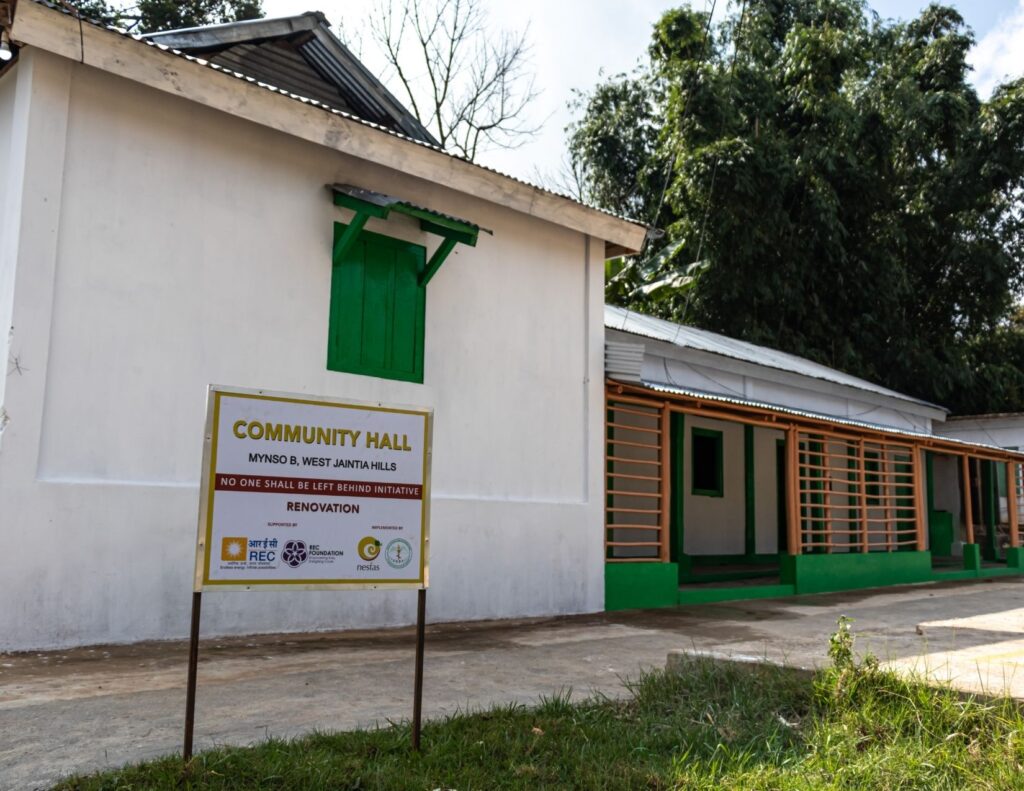
The project started in March 2020 and encountered a bit of a break in work due to the pandemic and the subsequent lockdowns. However, it was resumed in September 2020. On average, most of the community halls took at least 3-4 month for the architects to assess the halls, design plans, identify laborers and renovate. The process of renovation usually was focused on making sure the halls had ample natural lightings. After this, the comfort in term of infrastructure and temperature was assessed. Eg. for cold places, heating systems were provided while for warm/hot places, solar fans were installed. Along with the beautification of the halls, the renovation of these halls entailed the display of traditional construction skills such as the usage of bamboo and the showcase of bamboo art/designs by artisans. The two waves of the pandemic proved to be a huge challenge for the project but with all hands on deck, the renovation of all the 50 community halls were completed by October 2021.
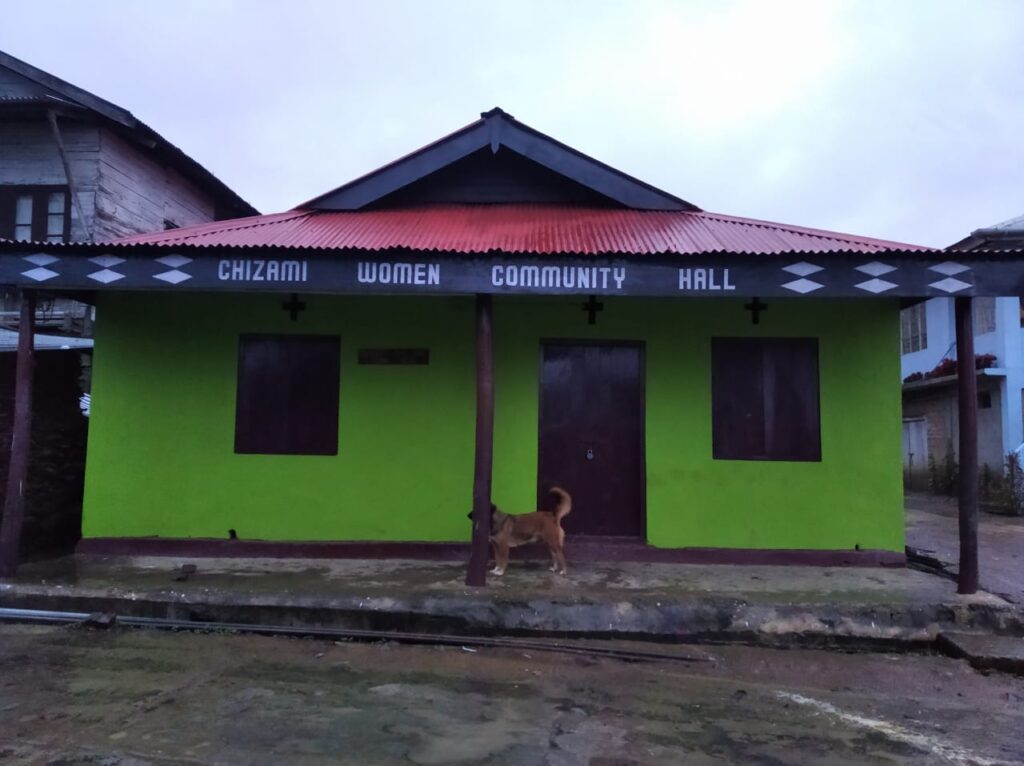
Members of the communities whose halls have been renovated have expressed their gratitude to NESFAS for renovating as well as beautifying their community halls.The project also brought about a certain interest among the people of these villages to cherish and take care of their community halls. From being in a dilapidated state, some of these halls now stand bright and tall due to the efforts put in by them under the guidance of the NESFAS team.
Community membersfrom Pashangprofusely thanked NESFAS for repairing the run down state of the Pashang community hall. Solar panels had also been installed in the community hall allowing the community members to hold meetings even in the evenings after sundown.
“The community halls have also been modified in such a way that it has provided shelter to us and with the availability of solar panels we can now conduct programs late in the evening.” remarked Trinila Mynsong, ASHA from Pashang.
Tastian Nongrum, the Secretary of Pashang, on the other hand discussed how the renovation has made the community hall more spacious and accomodating: “Since the renovation of thecommunity hall, there has been a change as compared to how it was before because now it has enough space for the village members to attend meetings and durbars.”
Umsawar was one of the few communities that benefitted from all the three innovations projects under the “No one shall be left behind initiative”. Hibi Suting, a school teacher from Umsawwar shared on how the intervention of NESFAS has been a blessing for the people of her community.
“Along with the renovation of the community halls, NESFAS has provided us with solar panels and the Himalayan rocket stove inside the community halls. This has provided light as well as heat to the entire room and in this way we can conduct meetings and programs even in the night time or in winter.” Hibi Suting said.
Bah Khraw, who along with Pius Ranee led the implementation of the project, relayed his joy in having had the opportunity to work with many professionals as well as skilled bamboo artisans and members of the community during the project. While stating that it was a hard challenge to mobilize and to execute the whole project, Bah Khraw has nothing but pride in the overall end result: “Initially, the execution of work was quite a challenging task for me. But in the end, it came out very well and seeing the transformation in the community hall structures gives me a sense of joy and satisfaction.”
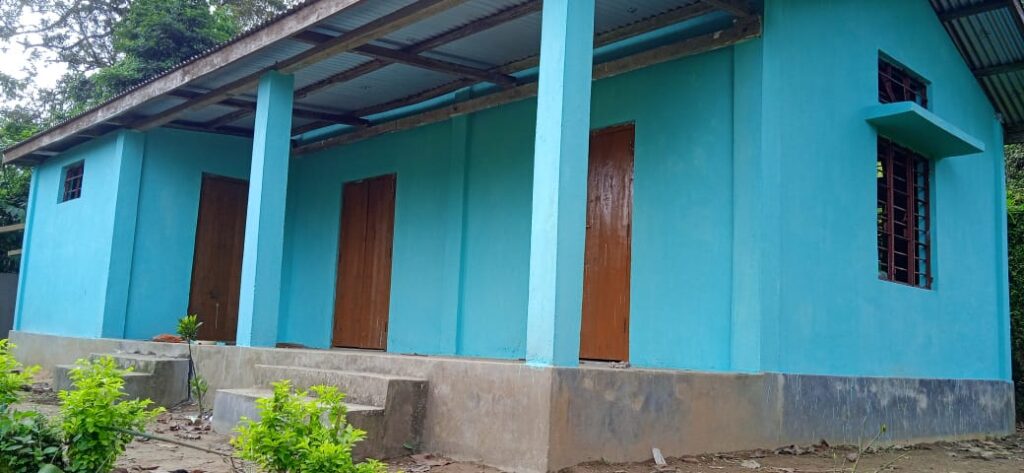
“Moreover, when we see that the community members love it and give statements like ‘This is the first time that we feel proud about our community hall’, it added more to the satisfaction. Overall, it is quite an achievement for the communities, for me, for NESFAS and the team who were involved.” Bah Khraw further added.



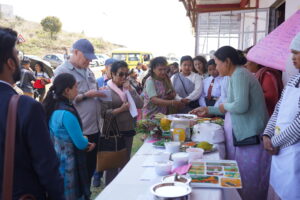
Thank you for this initiative of building community halls. All the halls look rather dark inside. Can we think of ways to bring in more light. In some places, nowadays, window are kept at the roof. Can we examine such ideas in local context.
Secondly, we should discourage use of concrete in the future and make more effective use of wood. Wood when cut and used as building material does not emit CO2. Wood that is cut and is either burned or left on the ground to rot does emit CO2. Think about this climate change issue.